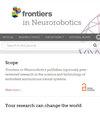CLIB:用于水下鱼类图像分类的忽略背景对比学习
IF 2.6
4区 计算机科学
Q3 COMPUTER SCIENCE, ARTIFICIAL INTELLIGENCE
引用次数: 0
摘要
针对现有方法在处理水下鱼类图像的背景噪声抗干扰方面存在不足的问题,提出了一种用于水下鱼类图像分类的忽略背景的对比学习方法--CLIB,以提高水下鱼类图像分类的准确性和鲁棒性。首先,CLIB 通过提取模块将图像中的主体与背景有效分离,并将其应用于对比学习,与原始图像组成三个互补视图。为了进一步提高CLIB在复杂水下图像中的自适应能力,我们提出了基于多视图的对比损失函数,其核心思想是增强原始图像与主体之间的相似性,最大化主体与背景之间的差异,使得CLIB在训练过程中更专注于学习主体的核心特征,有效忽略背景噪声的干扰。在 Fish4Knowledge、Fish-gres、WildFish-30 和 QUTFish-89 公共数据集上的实验表明,我们的方法性能良好,与基线模型相比,分别提高了 1.43-6.75%、8.16-8.95%、13.1-14.82% 和 3.92-6.19%,进一步验证了 CLIB 的有效性。本文章由计算机程序翻译,如有差异,请以英文原文为准。
CLIB: Contrastive learning of ignoring background for underwater fish image classification
Aiming at the problem that the existing methods are insufficient in dealing with the background noise anti-interference of underwater fish images, a contrastive learning method of ignoring background called CLIB for underwater fish image classification is proposed to improve the accuracy and robustness of underwater fish image classification. First, CLIB effectively separates the subject from the background in the image through the extraction module and applies it to contrastive learning by composing three complementary views with the original image. To further improve the adaptive ability of CLIB in complex underwater images, we propose a multi-view-based contrastive loss function, whose core idea is to enhance the similarity between the original image and the subject and maximize the difference between the subject and the background, making CLIB focus more on learning the core features of the subject during the training process, and effectively ignoring the interference of background noise. Experiments on the Fish4Knowledge, Fish-gres, WildFish-30, and QUTFish-89 public datasets show that our method performs well, with improvements of 1.43–6.75%, 8.16–8.95%, 13.1–14.82%, and 3.92–6.19%, respectively, compared with the baseline model, further validating the effectiveness of CLIB.
求助全文
通过发布文献求助,成功后即可免费获取论文全文。
去求助
来源期刊

Frontiers in Neurorobotics
COMPUTER SCIENCE, ARTIFICIAL INTELLIGENCER-ROBOTICS
CiteScore
5.20
自引率
6.50%
发文量
250
审稿时长
14 weeks
期刊介绍:
Frontiers in Neurorobotics publishes rigorously peer-reviewed research in the science and technology of embodied autonomous neural systems. Specialty Chief Editors Alois C. Knoll and Florian Röhrbein at the Technische Universität München are supported by an outstanding Editorial Board of international experts. This multidisciplinary open-access journal is at the forefront of disseminating and communicating scientific knowledge and impactful discoveries to researchers, academics and the public worldwide.
Neural systems include brain-inspired algorithms (e.g. connectionist networks), computational models of biological neural networks (e.g. artificial spiking neural nets, large-scale simulations of neural microcircuits) and actual biological systems (e.g. in vivo and in vitro neural nets). The focus of the journal is the embodiment of such neural systems in artificial software and hardware devices, machines, robots or any other form of physical actuation. This also includes prosthetic devices, brain machine interfaces, wearable systems, micro-machines, furniture, home appliances, as well as systems for managing micro and macro infrastructures. Frontiers in Neurorobotics also aims to publish radically new tools and methods to study plasticity and development of autonomous self-learning systems that are capable of acquiring knowledge in an open-ended manner. Models complemented with experimental studies revealing self-organizing principles of embodied neural systems are welcome. Our journal also publishes on the micro and macro engineering and mechatronics of robotic devices driven by neural systems, as well as studies on the impact that such systems will have on our daily life.
 求助内容:
求助内容: 应助结果提醒方式:
应助结果提醒方式:


